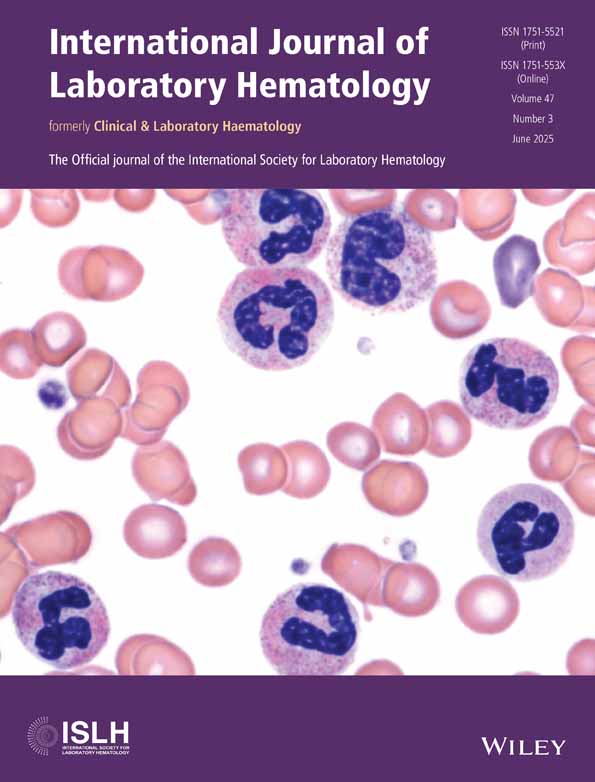Influence of Anticoagulants on Platelet Counts: A Study and Recommendations From the French Speaking Cellular Hematology Group (GFHC)
Funding: The authors received no specific funding for this work.
ABSTRACT
Introduction
For complete blood count, ethylenediaminetetraacetic acid (EDTA) is universally used and has been recognized as the most robust anticoagulant. However, it may lead to pseudothrombocytopenia (PTCT), due to the formation of platelet clumps, which is currently followed by resampling on sodium citrate. Other possible anticoagulants are citrate theophylline adenosine dipyridamole (CTAD) and MgSO4. These anticoagulants were compared here for resolution of PTCT and platelet count values and stability.
Methods
Paired blood samples were used to compare the four anticoagulants. First, samples containing clumps on EDTA were compared to samples collected on sodium citrate (335), CTAD (31), or MgSO4 (160). For platelet counts, compared series were of respectively, 168, 191, and 87, paired to PTCT-free EDTA samples. Finally, platelet count stability was evaluated over 2–24 h.
Results
MgSO4, followed by CTAD, was the most efficient to avoid platelet clump formation, while sodium citrate performed poorly. Regarding platelet count, significantly lower values were obtained with sodium citrate (p < 0.0001), with more samples (35% vs. 6.5%) below the 150 × 109/L threshold. Conversely, CTAD yielded similar values as EDTA, while higher counts were observed with MgSO4 (p = 0.008). Finally, platelet count stability began to decrease at 4 h for sodium citrate, while the other anticoagulants were stable for at least 8 h, up to 12 h for MgSO4 and 24 h for EDTA.
Conclusions
This real-life study confirms that sodium citrate should no longer be used to improve platelet counts in patients with platelet clumps, CTAD, if available, and MgSO4 being much better alternatives.
Conflicts of Interest
The authors declare no conflicts of interest.
Open Research
Data Availability Statement
Data from this study will be made available upon reasonable request to the corresponding author.




